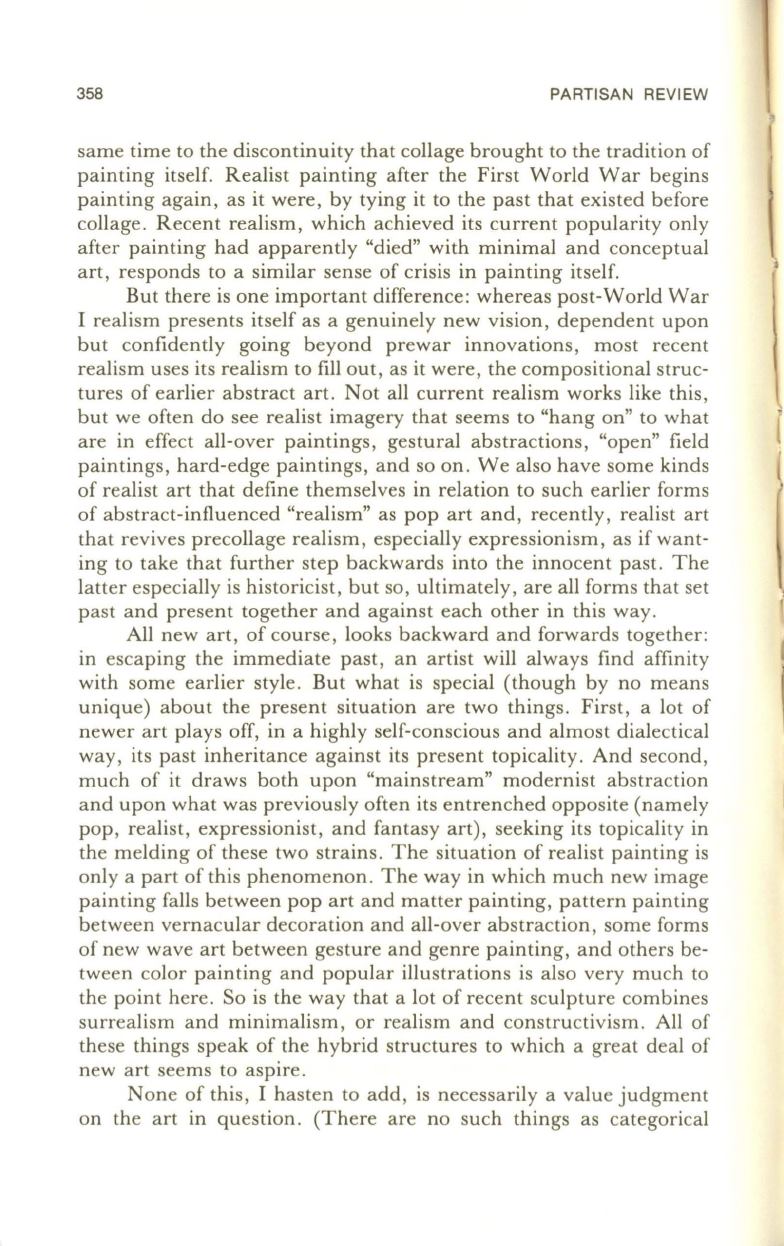
358
PARTISAN REVIEW
same time to the discontinuity that collage brought to the tradition of
painting itself. Realist painting after the First World War begins
painting again, as it were, by tying it to the past that existed before
collage. Recent realism, which achieved its current popularity only
after painting had apparently "died" with minimal and conceptual
art, responds to a similar sense of crisis in painting itself.
But there is one important difference: whereas post-World War
I realism presents itself as a genuinely new vision, dependent upon
but confidently going beyond prewar innovations, most recent
realism uses its realism to fill out, as it were, the compositional struc–
tures of earlier abstract art. Not all current realism works like this,
but we often do see realist imagery that seems to "hang on" to what
are in effect all-over paintings, gestural abstractions, "open" field
paintings, hard-edge paintings, and so on. We also have some kinds
of realist art that define themselves in relation to such earlier forms
of abstract-influenced "realism" as pop art and, recently, realist art
that revives precollage realism, especially expressionism, as if want-
ing to take that further step backwards into the innocent past. The
latter especially is historicist, but so, ultimately, are all forms that set
past and present together and against each other in this way.
All new art, of course, looks backward and forwards together:
in escaping the immediate past, an artist will always find affinity
with some earlier style. But what is special (though by no means
unique) about the present situation are two things. First, a lot of
newer art plays off, in a highly self-conscious and almost dialectical
way, its past inheritance against its present topicality. And second,
much of it draws both upon "mainstream" modernist abstraction
and upon what was previously often its entrenched opposite (namely
pop, realist, expressionist, and fantasy art), seeking its topicality in
the melding of these two strains. The situation of realist painting is
only a part of this phenomenon. The way in which much new image
painting falls between pop art and matter painting, pattern painting
between vernacular decoration and all-over abstraction, some forms
of new wave art between gesture and genre painting, and others be–
tween color painting and popular illustrations is also very much to
the point here. So is the way that a lot of recent sculpture combines
surrealism and minimalism, or realism and constructivism. All of
these things speak of the hybrid structures to which a great deal of
new art seems to aspire.
None of this, I hasten to add, is necessarily a value judgment
on the art in question. (There are no such things as categorical


